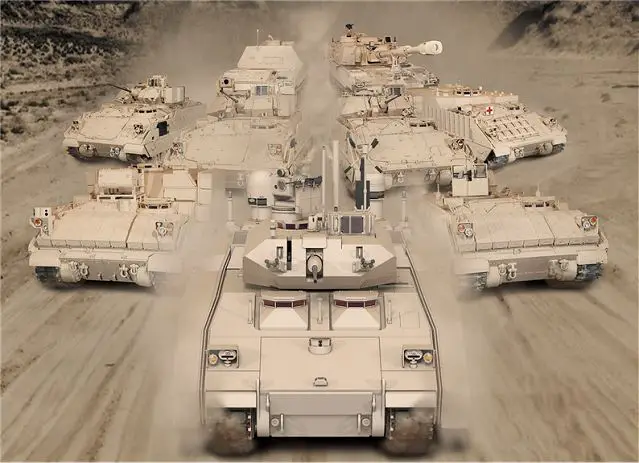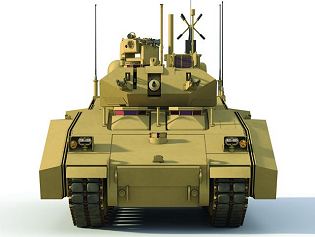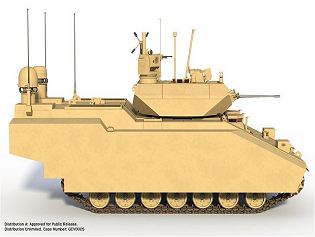|
The Ground Combat Vehicle (GCV) is the U.S. Army's replacement program for armored fighting vehicles in Heavy and Stryker brigade combat teams. The GCV is organized under the Follow On Incremental Capabilities Package of the BCT Modernization program. The first variant of the vehicle is to be prototyped in 2015 and fielded by 2017. The U.S. Army’s recent analysis and review of all current fighting vehicles exposed an aging fleet and a pressing demand to bring infantry fighting vehicles into the future. The vehicles employed today are some of the best in the world, but they have limited capability for future growth. They provide many capabilities today but are nearing the limits that will allow us to upgrade their mobility, survivability, power generation and protection for our soldiers. BAE Systems and Northrop Grumman first announced their intentions to join together in pursuit of the Ground Combat Vehicle competition in March 2010. Since then, BAE Systems and Northrop Grumman have assembled a team with some of the most talented and seasoned, high performance capability providers in the defense industry. As the prime contractor, BAE Systems will provide the overall program management and systems integration for GCV and will also be responsible for providing the vehicle design, structure, logistical support as well as the readiness and sustainment of the platform.
|
| Armament |
|
The GCV vehicle of BAE Systems will be fitted with unmanned turret provides improved survivability and an easy upgrade path for future weapon systems. Main armament includes a 25mm automatic cannon and 7.62mm coaxial machine gun coupled to an anti-tank guided missile system.
|
| Design and protection |
The GCV of BAE Systems will have the same level of protection that the range of vehicles RG33 MRAP. It employs tailorable combinations of armor packages on a tough, space efficient steel core hull. BAE Systems-Northrop Grumman’s GCV meets the Army’s requirements for an original, tailored approach to current and future combat needs. The vehicle uses mature technology in a reconfigured package with an open architecture and scalable armor packages. This flexibility means it has the ability to adapt to changing environments for years to come. BAE Systems-Northrop Grumman’s GCV survivability will exceed that of a Mine-Resistant Ambush Protected vehicle and the enhanced mobility capabilities will allow it to operate effectively in urban and cross country environments. One of the keys to GCV’s mobility is the low-speed power provided by the HED system. In addition, our team’s GCV offers a new, larger hull to better accommodate personnel and gear and has the capacity to carry a nine-man squad.
|
| Mobility |
|
THE GCV of BAE Systems includes a hybrid electric drive propulsion system that enables force protection and mobility in a lighter vehicle, while accommodating future growth in power requirements and new technologies. Hybrid electric drive (HED) is the next logical step for the U.S. Army, and now is the time for soldiers to reap the benefits that hybrid will bring to the battlefield. Hybrid propulsion systems are efficient, survivable, and economical, and they offer significant power advantages, including growth potential. This allows the vehicles to meet the demands of near-term operations, while providing a platform for future integration and growth at low risk and cost. The GCV BAE Systems design exceeds current combat systems in fuel efficiency, agility and acceleration due to the electric drive. It provides options for growth with capacity and power to integrate new technologies.
|
| Accessories |
|
The GCV will also have an integrated electronic network capability and embedded intelligence, surveillance and reconnaissance assets to connect warfighters to the sources of information. The design concept is based on mature technology and provides a low risk approach to a highly compliant solution. The advanced electronic network will also be adaptable to future network upgrades. This will allow soldiers to better communicate and to share information on-the-move.
|
| |
| Specifications |
| Back to top |
|
Armament
|
|
One 25 mm automatic cannon, one 7.62 mm coaxial machine gun and anti-tank guided missile system.
a
|
|
Country user
|
|
United States
|
|
Designer
|
|
BAE Systems - Northrop Grumman
|
|
Accessories
|
|
C4ISR system, fire control system, jamming system, electronic network capability, surveillance and reconnaissance systems
|
|
Crew and personnel
|
|
3 + 9 soldiers
|
|
|
Armor
|
|
V-shaped hull, standard armour against small arms firing and shell splinters, armour protection against IDED and land mines.
|
|
Weight
|
|
63,500 kg
|
|
Speed
|
|
70 km/h maximum speed on road
|
|
Range
|
|
300 km
a
|
|
Dimensions
|
|
Lenght, 9 m; Width, 5 m; Height, 3 m
|
|
|
| |
|
































